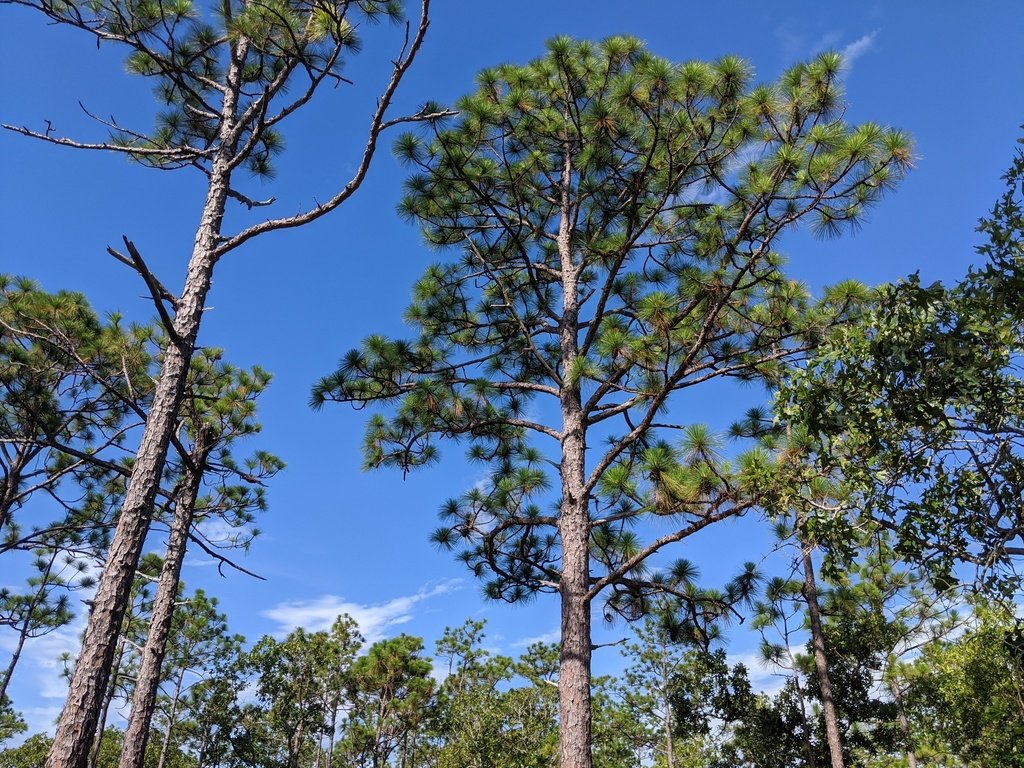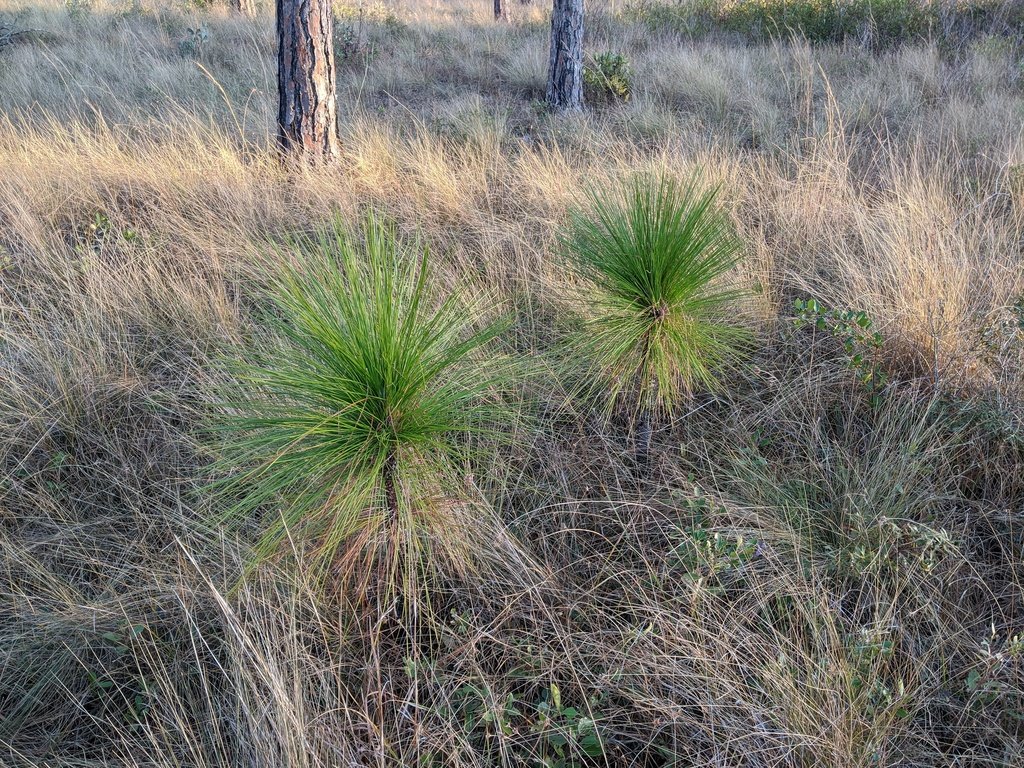Here’s to the land of the longleaf pine
by Amanda Rossillo | The News Reporter | August 2021
In the first installment of Backyard Science, we took an in-depth look at the iconic Venus flytrap. This week, we'll focus on another special plant from southeastern North Carolina, which helped shape our state’s economy and culture: the longleaf pine.
Before European settlement, longleaf pine forests covered nearly 90 million acres across the southeast, from Virginia to Florida and Texas. They were once so abundant in North Carolina that the State Toast begins with the line “Here’s to the land of the long leaf pine.” Today, these trees are only found in small patches within its original range, including Green Swamp, Lake Waccamaw State Park, and Bladen Lakes State Forest, with the most diverse habitats found in wet soils. These trees can grow over 100 feet tall, with a trunk up to three feet wide. Longleaf pines were named for their exceptionally long pine needles, which can grow up to a foot and a half long.
Longleaf pines and Venus flytraps may look very different, but they have some similarities. They can be found in similar wetland habitats, and both are dependent on fire. Longleaf pine seeds need to be in contact with soil to grow, and regular fires clear away leaves and smaller plants that may block them from touching the ground. Once they've taken root, these trees begin their growth cycle with an unusual first step known as the grass stage. At this point, the tree looks like a clump of needles on the ground. These needles protect the tree from the fires that clear away competing plants. This clump doesn't grow much at first--most of the growth happens underground in the root. Then, the tree grows very tall in just a few years, giving it access to sunlight and protection from fire. Longleaf pines have been known to live for over 300 years.
Longleaf pine savannas play many important ecological and economic roles. They are home to abundant wildlife, including many rare and endangered animals like the red-cockaded woodpecker. Their strong trunks provide protection against storms, and they are also resistant to many pests and diseases.
Longleaf pine in the early stages of development. Courtesy of iNaturalist
Longleaf pines have played a major role in North Carolina's economic and cultural development. Their strong, straight wood was highly sought after for ships, railroads, and buildings in developing towns and cities. In addition, the sap was processed into glue, tar, and turpentine, which were essential components of naval ships during the 18th and 19th centuries. By 1840, over 95% of all of the tar produced in the United States originated in North Carolina, hence the nickname the Tar Heel State. Today, the pine needles are highly valuable as mulch within the pine straw industry, generating over $35 million in sales each year in North Carolina alone.
Though these pines once blanketed the southeastern landscape, today they occupy less than 3% of their original range due to this historical extensive logging. Their slow growth makes restoration challenging, but prescribed burns, like those managed by The Nature Conservancy, are helping to restore their past range across the Southeast. The NC Wildlife Resources commission has developed restoration strategies for Columbus County game lands, and additional efforts are ongoing at Lake Waccamaw and Jones Lake State Parks. There are also financial incentives for private landowners to grow longleaf pines on their property through the US Department of Agriculture’s Longleaf Pine Initiative.
Next time you visit the Museum, take a look at the young longleaf pine growing in our Nature PlaySpace. You can see its iconic long needles and cones up close. Longleaf pines have shaped our state's history for centuries, and with ongoing conservation efforts, will hopefully continue to do so for many more.

